Healthy portions are smaller than you think
Many pet owners don't know how much food their cat really needs. This means that many cats are overfed; not only can this cause weight gain, but may lead to other health issues.
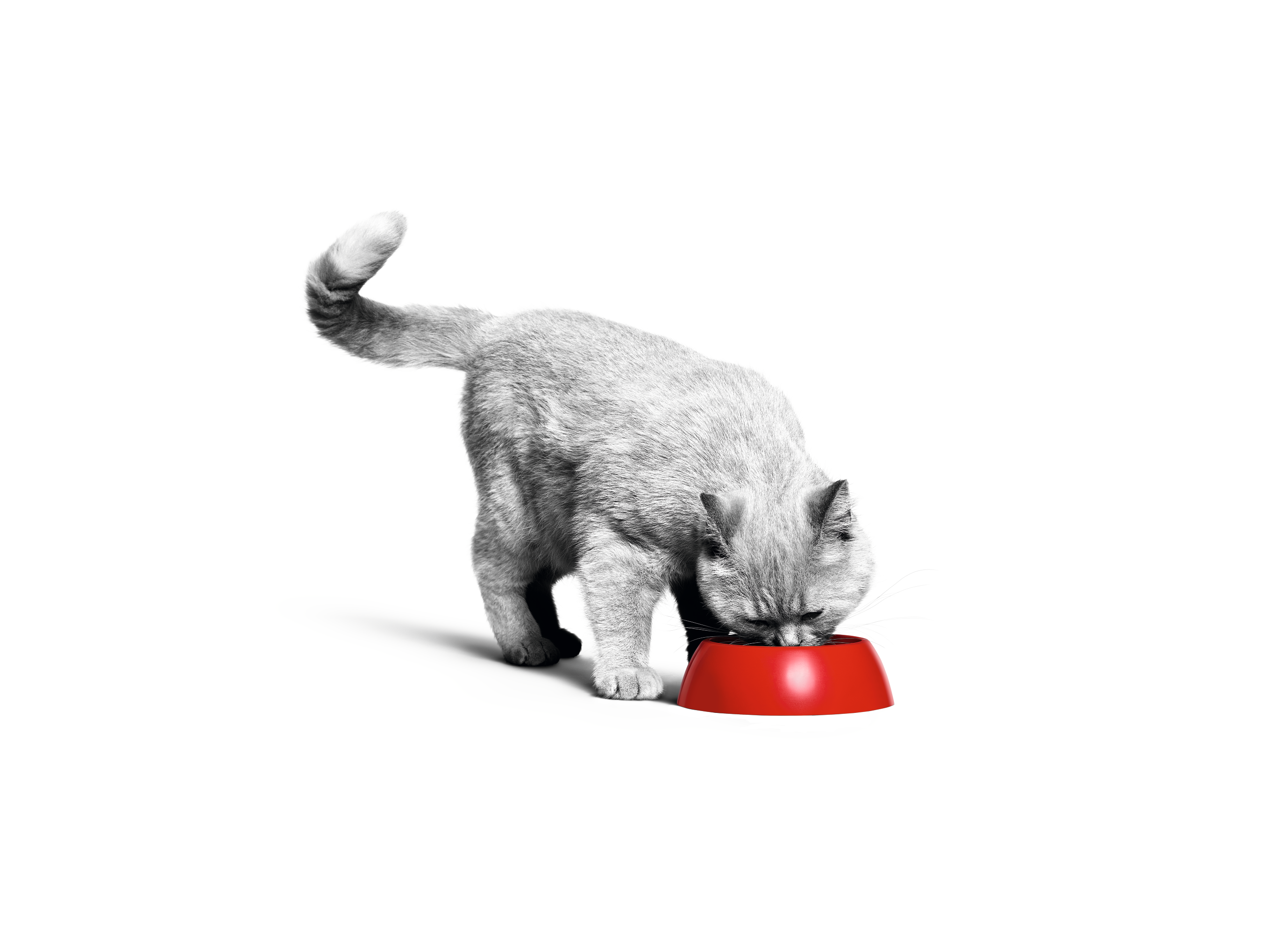
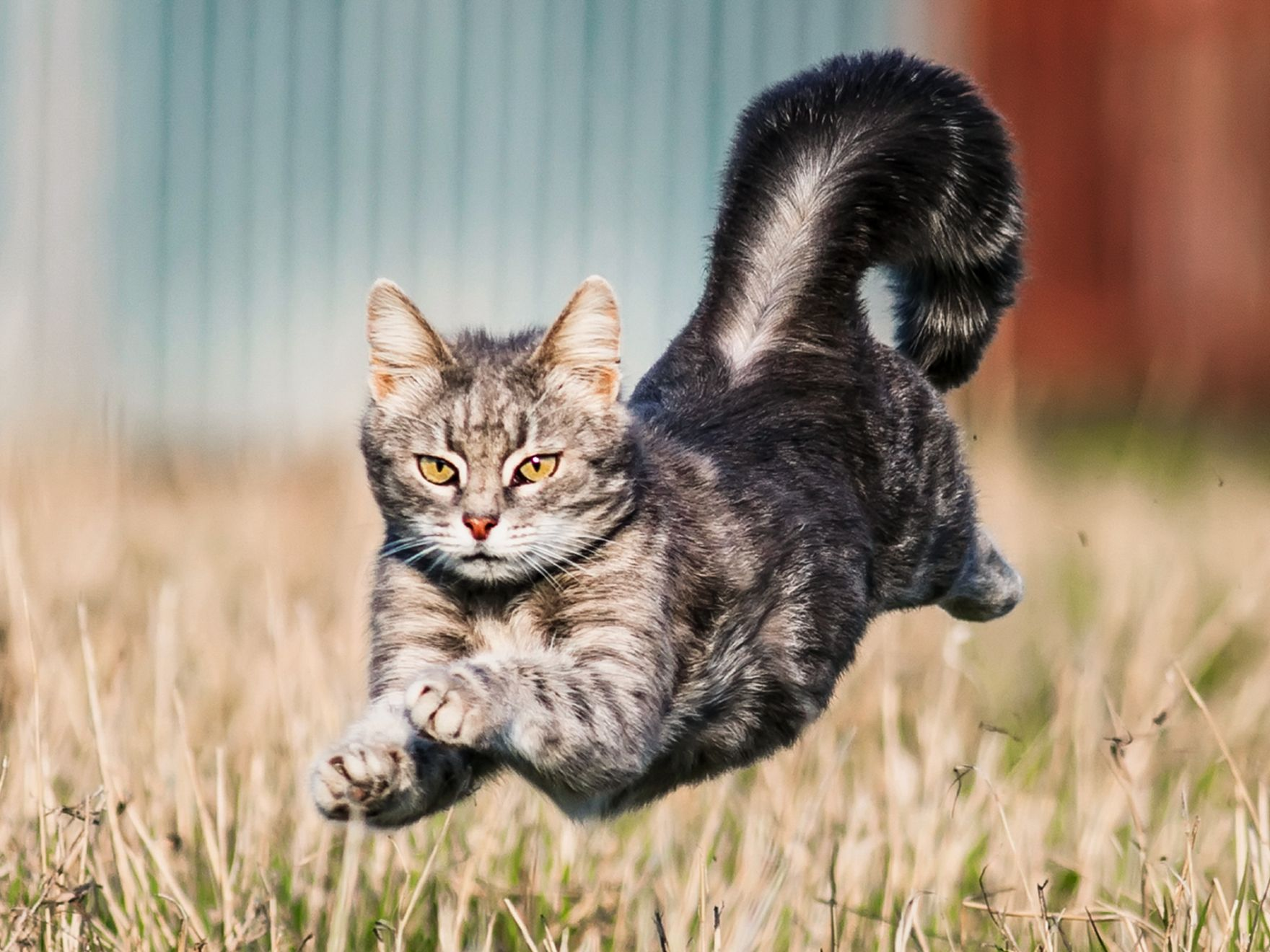
What is the correct portion size for my cat?
Healthy weight is achieved by maintaining the correct balance between the energy your cat takes in through their food, and the energy they use.
The starting point is to follow the feeding guide on the cat food you have selected. However, a number of factors may also need to be taken into consideration when determining the portion size.
Firstly, consider the activity levels of your cat; are they often on-the-move, do they spend a lot of time outdoors, or are they more sedentary indoor cats? How much exercise a cat gets will determine the energy they need throughout the day.
Next, has your cat been spayed or neutered? These procedures can impact the portion sizes or amount of food needed by your cat. Spaying or neutering changes their metabolism and they may need fewer calories.
It's important to pay close attention to their shape or any changes in activity and adjust their portions with your veterinarian's guidance to account for this.
How much does a kitten need to eat?
A healthy weight begins at the start of your kitten’s life, with the right balance of nutrition and activity.
Kittens will double in weight within the early weeks of life and therefore require more calories and energy to fuel such rapid growth. It’s essential to give your kitten specially formulated food for their nutritional needs up until about age 1. Since kittens and cats are natural grazers, you can serve the recommended portion of food in small meals throughout the day or leave out the full portion to allow your kitten to self-regulate.
In both cases, we recommend using a digital food scale to weigh your kitten’s food portion and divide it up accordingly. Finally, having access to fresh water and a quiet space to eat are the other crucial mealtime components for your kitten!
How a cat's eating habits impact their portion sizes
What cats eat, as well as how they eat and how they live, greatly impacts their well-being and their health.
Domestic cats have distinctly different feeding habits from humans or dogs. Instead of two or three large meals, some cats prefer to graze over the day. It is important, therefore, not to overfeed during these meals. Instead, measure out your cat's correct portion for the day and then either divide this into smaller meals, or leave the bowl out during the day (without filling it again) and allow your cat to revisit whenever they like, depending on your cat's preference.
Feeding puzzles are another great way to engage your cat's hunting instincts and encourage them to be more active during meal times.
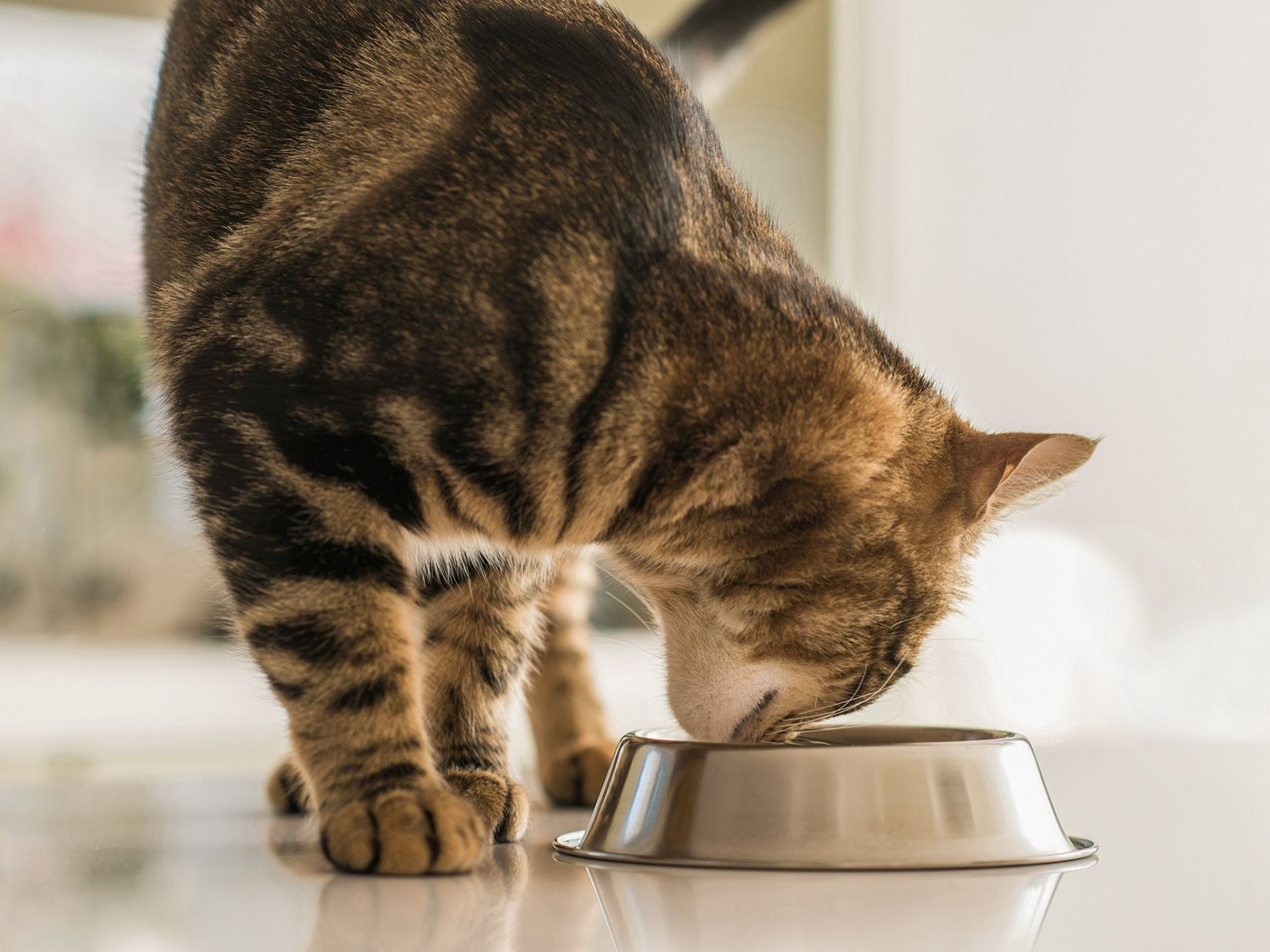
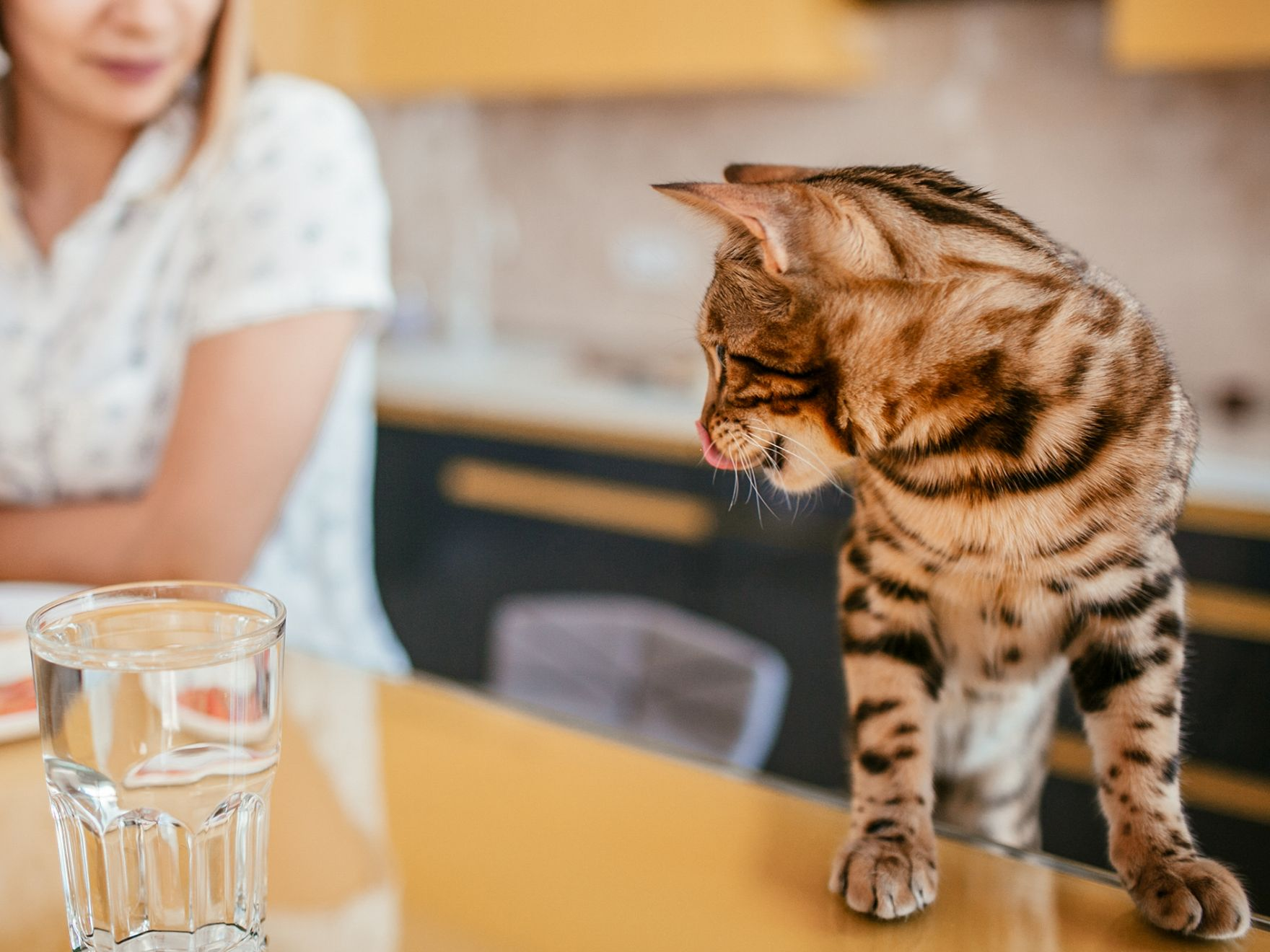
Why is my cat begging?
Does your cat keep asking for tidbits of your food? Despite appearances, this might not mean that they are hungry. Their behavior may instead be a habit, boredom or an attempt to seek attention. Giving in to these behaviors only serves to reinforce the action.
Having said this, continuous begging can also be an indication of illness. Infestations of parasites, for instance worms, can cause increased appetite, continuous hunger, sometimes combined with weight loss.
If food seeking behavior or consistent hunger continues, consult your veterinarian who will be able to identify or rule out any underlying concerns or conduct a full nutritional assessment.
Tips for maintaining the correct portions for your cat
It may seem challenging to maintain a healthy portion size for your cat, however there are a few of things you can be aware of to prevent overfeeding.
Firstly, divide their ration into small, frequent meals. If you feed your cat dry food, measure out each meal carefully using scales or standard kitchen measuring devices, and leave it available for them to come back to until the next meal.
Second, If your cat eats all of their food before their next meal time, avoid simply topping up the bowl whenever it is empty. This can help prevent overfeeding. Similarly, avoid feeding your cat any human food as even small amounts can represent a large percentage of their daily energy requirements.
If you give your cat treats, it's important to take those additional calories into account when calculating their daily rations. Treats should represent no more than 10% of your cat's total daily calorie intake. Using kibbles from your cat's portions as a treat means you can be confident that your cat is getting the right balance of nutrients while maintaining the correct number of calories.
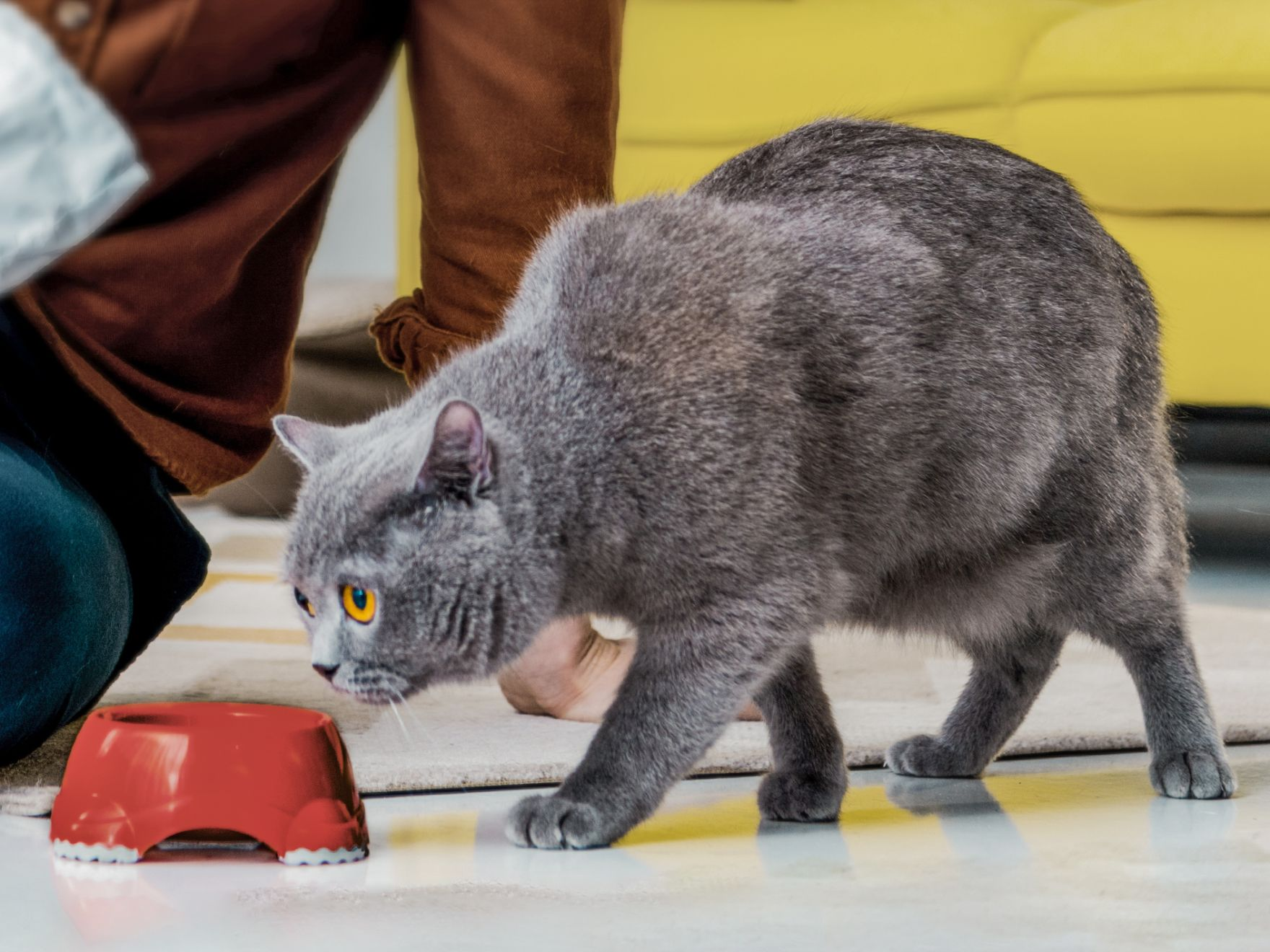
Healthy activity requires play
Playtime is key to keeping your cat stimulated, active and at a healthy weight. The amount of exercise varies based on factors such as their age, weight and breed.
Healthy growth lasts a lifetime
Losing weight is more difficult than preventing weight gain in the first place, so it's important that healthy habits and behaviours are set from day one.